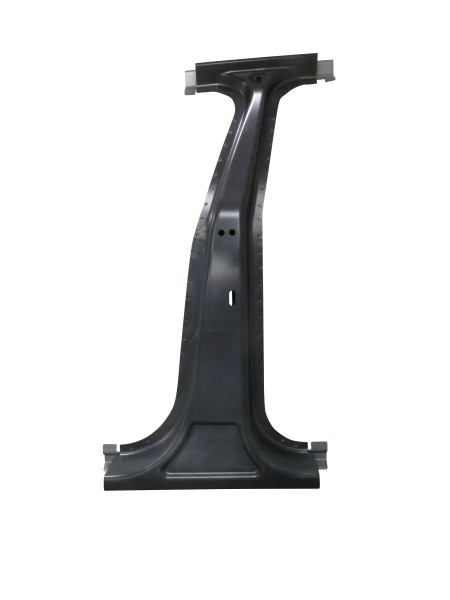Trade press, 2015-11-04, 10:05 am
ThyssenKrupp Steel Europe pioneers hot-formed steel composites with TRIBOND, a new product that permits completely new property profiles and saves weight
A new, groundbreaking material concept for hot forming in the automotive industry is now production ready: TRIBOND®, a modular composite, will initially be launched in three-layer form, espacially for hot forming, in two high-strength versions – TRIBOND® 1200 and TRIBOND® 1400, which are both ideally suited for safety-relevant automotive structural components. The new steel composites can realize previously unachievable property profiles – high strength and maximum ductility in one part. TRIBOND® improves vehicle safety while at the same time allowing cost-efficient weight reduction. ThyssenKrupp Steel Europe is currently the only automotive supplier capable of offering tailored steel composites for hot forming.
Material concept of the future offers completely new property profiles
Forthcoming challenges in the auto industry were one of the starting points for the development of TRIBOND®: “OEMs must reduce the weight of their European fleets to meet statutory CO2 limits,” says Bernhard Osburg, head of Sales Automotive at ThyssenKrupp Steel Europe. “Thanks to numerous innovations in recent years, steel is now synonymous with cost-efficient weight reduction and provides the most convincing answers to the key question of how to meet weight and performance targets at the lowest possible cost. This is an area where hot forming will gain in importance in the coming years. Our new product TRIBOND® extends the potential of the hot forming process to previously unknown applications.”
What is revolutionary about TRIBOND® is a multi-layer structure that permits completely new property profiles. The variants now ready for production combine an inner layer of high-strength steel and outer layers of formable, ductile steel. This permits maximum strength and high ductility to be realized in one part, something currently not possible with homogeneous materials. “TRIBOND® 1200 and 1400 will add completely new dimensions to part performance,” says Osburg. “Compared with a conventional high-strength steel such as our MBW 1500, in terms of ductility we can achieve up to 150 percent greater bending angles with comparable yield and tensile strengths.” In the event of high axial stresses caused by an impact, these materials combine maximum strength with high energy absorption through controlled deformation of the steel to improve occupant safety. With TRIBOND, hot-formed steels can now even more better be used in longitudinal members.
High weight-reduction potential offers opportunities for CO2 reduction
The high-strength variants TRIBOND® 1200 and 1400 are mainly intended for use in automotive structural parts such as A-pillars, B-pillars, longitudinal members and cross members. Compared with hot-formed reference parts, TRIBOND® offers significant additional weight-reduction potential of up to ten percent per part: an important element in helping customers reduce the CO2 emissions of their vehicle fleets.
High process reliability offers advantages to customers
In the past, conflicting material properties such as high strength and ductility could only be realized using complex technological processes. For example, targeted temperature control can be used to create different strength zones in a B-pillar via the tailored tempering process. To achieve the desired results, reliable die and process control is absolutely essential. “For customers, the advantage of TRIBOND® is that the complexity switches back to the material, in this case to the production of the multilayer slabs. Customers can process TRIBOND® directly with no changes on their existing production lines,” explains Osburg.
The modular TRIBOND® system is open to other applications
ThyssenKrupp Steel Europe has designed TRIBOND® as a material system. The principle of combining a high-strength steel with a mild steel is suitable for all applications where different properties are required of the core and the other layers. The great flexibility of material selection allows properties to be tailored to the application. To validate this in case of a crash, ThyssenKrupp Steel Europe has installed a simulation process that can model and test the required properties in advance. Bernhard Osburg: “We at ThyssenKrupp Steel Europe are proud to be the first company to offer tailored, production-ready steel composites for hot forming. We are in talks with several major manufacturers with a view to production use.”
Visit us at Blechexpo 2015 in Stuttgart from November 3 to 6, hall 4, booth 4308.




